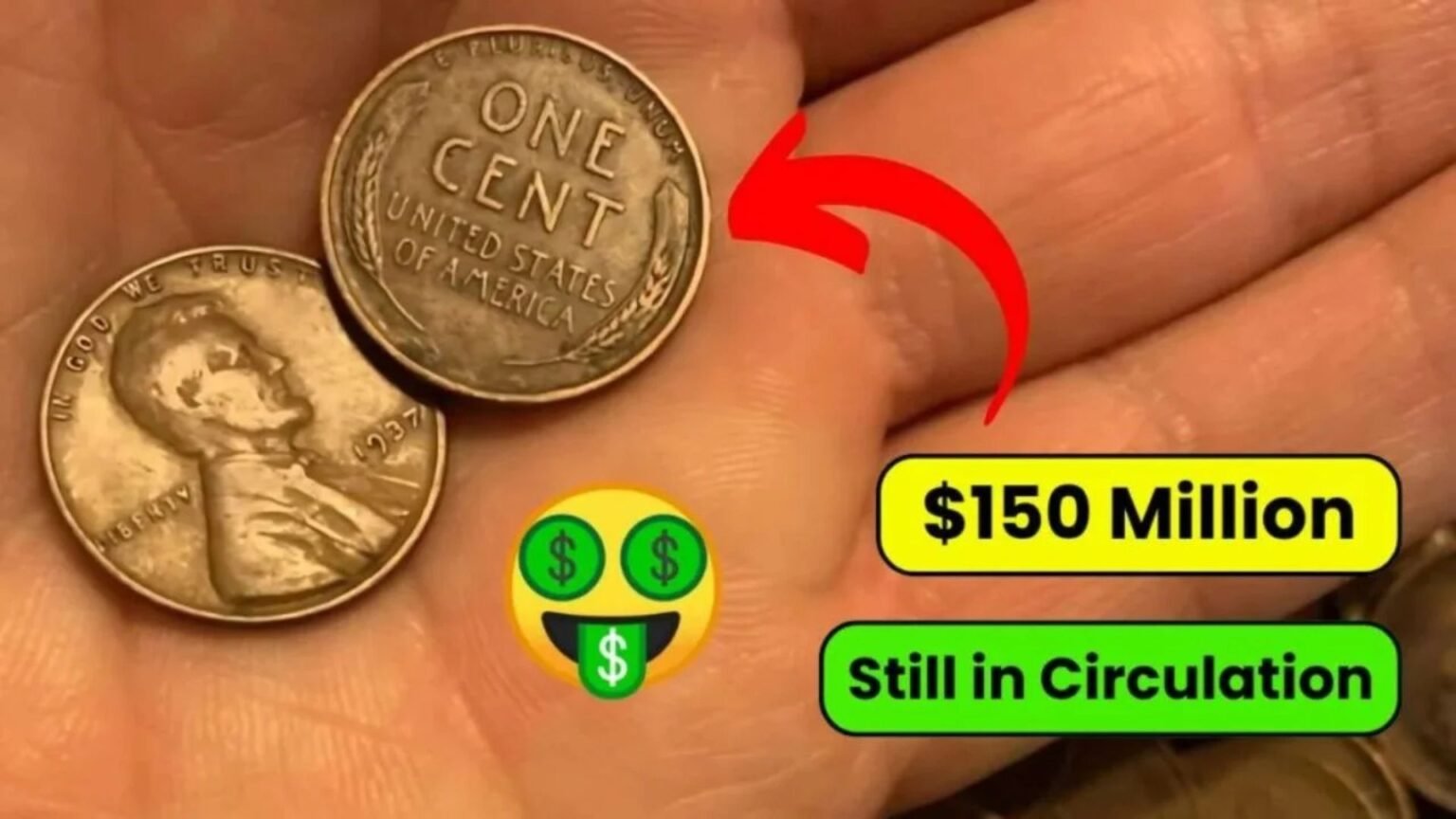Imagine finding a penny worth $4.2 million in your loose change. Sounds like a dream, right? The Lincoln Wheat Penny, a humble coin from America’s past, could turn that fantasy into reality. Some rare versions are worth millions, and they might still be hiding in circulation. Read on to discover the history, value, and how to spot one!
What Is the Lincoln Wheat Penny?
The Lincoln Wheat Penny is a one-cent coin minted in the U.S. from 1909 to 1958. It features Abraham Lincoln’s profile on the front and two wheat stalks on the back, earning its nickname “Wheat Penny.” While most are worth just a cent, rare versions like the 1943 bronze penny can fetch millions due to minting errors and historical significance.
The Fascinating History of the Lincoln Wheat Penny
The Lincoln Wheat Penny debuted in 1909 to celebrate Abraham Lincoln’s 100th birthday. Designed by Victor David Brenner, it was the first U.S. coin to feature a real person, breaking from symbolic imagery like Lady Liberty. The wheat stalks on the reverse symbolized America’s agricultural strength.
During World War II, copper became vital for military supplies, so in 1943, the U.S. Mint switched to zinc-coated steel pennies. However, a few copper planchets from 1942 were accidentally used, creating the ultra-rare 1943 bronze penny. Experts estimate only 15-20 exist, making them a numismatic legend.
The coin’s design lasted until 1958, when it was replaced by the Lincoln Memorial penny. Over its 49-year run, billions were minted, but specific errors and low-mintage years skyrocketed certain coins’ values.
Why Is the Lincoln Wheat Penny So Valuable?
The $4.2 million valuation often refers to the 1943 bronze penny, a minting error that’s among the rarest coins in the world. Here’s why these pennies are so prized:
- Rarity: Only a handful of 1943 bronze pennies exist, with just one known from the Denver Mint.
- Historical Significance: Born from a wartime error, these coins reflect a unique moment in U.S. history.
- Condition: Pristine, uncirculated coins command higher prices due to their preserved state.
- Collector Demand: Numismatists and investors drive up prices at auctions, with some pennies fetching over $1 million.
Other valuable Wheat Pennies include the 1909-S VDB (with the designer’s initials) and the 1955 Doubled Die, known for its distinct doubled text. These coins, while not $4.2 million, can still be worth thousands.
Top Valuable Lincoln Wheat Pennies
| Year | Variant | Estimated Value | Key Feature |
|---|---|---|---|
| 1943 | Bronze Penny | Up to $4.2M | Rare copper error |
| 1909-S | VDB | $1,000-$100,000 | Designer’s initials, low mintage |
| 1955 | Doubled Die | $1,000-$25,000 | Doubled text error |
| 1914-D | Standard | $50,000+ | Low mintage |
How to Find a Valuable Lincoln Wheat Penny
Believe it or not, some Lincoln Wheat Pennies might still be in circulation, hiding in coin jars, piggy banks, or even your pocket change. Here’s how to hunt for a potential treasure:
- Check the Date and Mint Mark: Look for 1943 pennies or other key years like 1909-S, 1914-D, or 1922 (no D). Mint marks (“D” for Denver, “S” for San Francisco, or none for Philadelphia) are below the date.
- Perform the Magnet Test: A 1943 bronze penny won’t stick to a magnet, unlike common steel pennies.
- Weigh the Coin: Bronze pennies weigh about 3.11 grams; steel ones are lighter at 2.7 grams.
- Inspect for Errors: Look for doubled text, missing mint marks, or off-center strikes.
- Get Professional Authentication: If you suspect a valuable find, contact a grading service like PCGS or NGC. Never clean the coin, as this can ruin its value.
Check old coin collections, estate sales, or bank rolls for Wheat Pennies. While finding a $4.2 million penny is a long shot, even common ones in good condition can be worth $10-$100.
Notable Facts and Record-Breaking Sales
The Lincoln Wheat Penny has made headlines for its jaw-dropping auction prices. Here are some highlights:
- 1943-D Bronze Penny: Sold for $1.7 million in 2010, with experts estimating a perfect specimen could reach $4.2 million.
- 1909-S VDB: A low-mintage coin that sold for $100,000+ in high grades.
- 1944-S Steel Penny: A rare error coin, fetching up to $1.1 million.
- 1955 Doubled Die: Known for its striking error, one sold for $124,000.
Record Auction Prices for Lincoln Wheat Pennies
| Year | Variant | Auction Price | Year Sold |
|---|---|---|---|
| 1943-D | Bronze | $1.7M | 2010 |
| 1944-S | Steel | $1.1M | Unknown |
| 1909-S | VDB | $100,000+ | Multiple |
| 1955 | Doubled Die | $124,000 | Unknown |
These sales show why collectors are obsessed with Wheat Pennies. Their rarity and historical allure keep demand high, driving values upward.
Expert Tips for Coin Collectors
New to numismatics or a seasoned collector? These tips will help you dive into the world of Lincoln Wheat Pennies:
- Join a Community: Connect with other collectors through numismatic clubs or online forums like Reddit’s r/coins.
- Learn the Grading System: Understand the Sheldon Scale (1-70) to assess coin condition. Higher grades (e.g., MS-70) mean higher value.
- Attend Coin Shows: Visit local or national shows to buy, sell, or learn from experts.
- Store Properly: Use protective holders and avoid touching coins with bare hands to preserve their condition.
- Research Key Dates: Focus on rare years like 1943, 1909-S, or 1914-D to target valuable finds.
Start small by checking your change or buying penny rolls from banks. You might uncover a gem worth more than its face value.
Frequently Asked Questions (FAQs)
Is a $4.2 million Lincoln Wheat Penny really in circulation?
It’s possible but unlikely. Most 1943 bronze pennies were found decades ago, but some could still be in old collections or change jars.
How do I know if my penny is valuable?
Check the date, mint mark, and composition. For 1943 pennies, use a magnet—if it doesn’t stick, get it authenticated by PCGS or NGC.
Can cleaning a penny increase its value?
No, cleaning damages the coin’s surface and reduces its value. Always keep coins in their original state.
Where can I sell a valuable penny?
Contact reputable dealers or auction houses like Heritage Auctions. Grading services can also boost credibility.
Are all Wheat Pennies valuable?
No, most are worth a few cents. Only specific years, errors, or pristine conditions fetch high prices.
Conclusion: Start Your Treasure Hunt Today
The Lincoln Wheat Penny is more than a coin—it’s a piece of American history with the potential to change your life. From the rare 1943 bronze penny valued at $4.2 million to other collectible variants, these coins spark excitement for numismatists and casual treasure hunters alike. Next time you get change, take a closer look—you might be holding a fortune. Start checking your coins, join a collector’s community, or share this post with friends to spread the thrill of the hunt!






